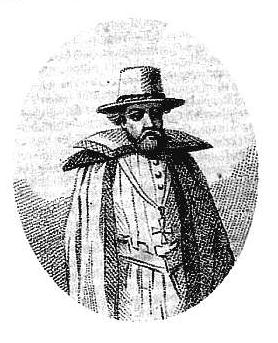|
The myth of the Gunpowder Plot
Magazines and some guide books continue to print the erroneous
assertion that the infamous Guy Fawkes plot to blow up King James I and
the Houses of Parliament during the early 17th century was hatched at the
Red Hall in Bourne. But by 1925, John T Swift dismissed all
connections between the plot and the Red Hall in his history Bourne and
People Associated with Bourne yet it was to be another forty years before
the myth was finally laid to rest. In between times, Bourne was stuck with
the legend which was often referred to in the local newspapers and there
is evidence that many still believed it in later years and may still do so
today. The story was finally discredited in 1964 by Mrs Joan Varley, archivist to Lincolnshire Archives Committee, after studying parish registers and deeds of the hall that had recently been deposited with their records by a descendant of the Bourne Digby family, Sir Everard Philip Digby Pauncefort-Duncombe, of Great Brickhill Manor in Buckinghamshire, and so the popular theory was well and truly laid to rest. The story had evolved around the mistaken belief that Sir Everard Digby was born and lived at the Red Hall and it has been frequently stated that as he was one of the main perpetrators, he and his fellow conspirators met at his home where the plot was hatched. The date the hall was built is not known exactly but 1605 is the most favoured. This was the year that the plot was actually discovered and as it was some time in the planning, it would have been impossible for the hall to have been the meeting place for those involved in the conspiracy.
In fact, Sir Everard lived at Stoke Dry, Uppingham, Rutland, and was one of the great landowners in the Midlands although he had no connection with Bourne. But over a century later, the building did pass into the hands of descendent of the Digby family, James Digby, gentleman, (1707-1751), who appears as a deputy steward to the Manor of Bourne Abbots at a session of the manorial court in October 1730, and from then onwards there are numerous references to him and his descendants in the manorial records. It is from this date also that the name Digby begins to appear in the parish registers. The family owned and inhabited the Red Hall from then until about a century later and this fact appears to have been the cause of some wishful deduction that Sir Everard was at one time the tenant of the Red Hall which was certainly not the case. After an exhaustive search through the documents, Mrs Varley published her findings in April 1964, with some reluctance it would seem, because she said at the time: “I am sorry in a way that I have robbed Bourne of its best known legend but I was merely trying to get at the truth. It is very easy for incorrect statements to get into local town guides. Stories grow up about places, following generations believe they are true and eventually they are accepted as fact. They are written into books and other authors do not take the time to check and revise them.” This is still the case. Once a statement is made in print, it is filed away in various archives and then when a subject or place is to be written about again, the writer consults the cuttings and repeats the error. So it is that the Gunpowder Plot will surface occasionally as having happened at the Red Hall because some writers are lazy and, as Mrs Varley pointed out, careless about checking their facts. See also Guy Fawkes' Night celebrations in past times Return to The Red Hall
Go to: Main Index |
